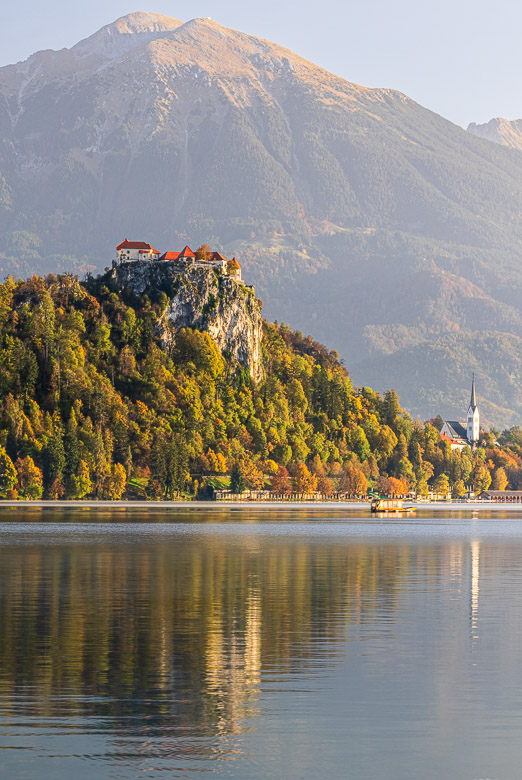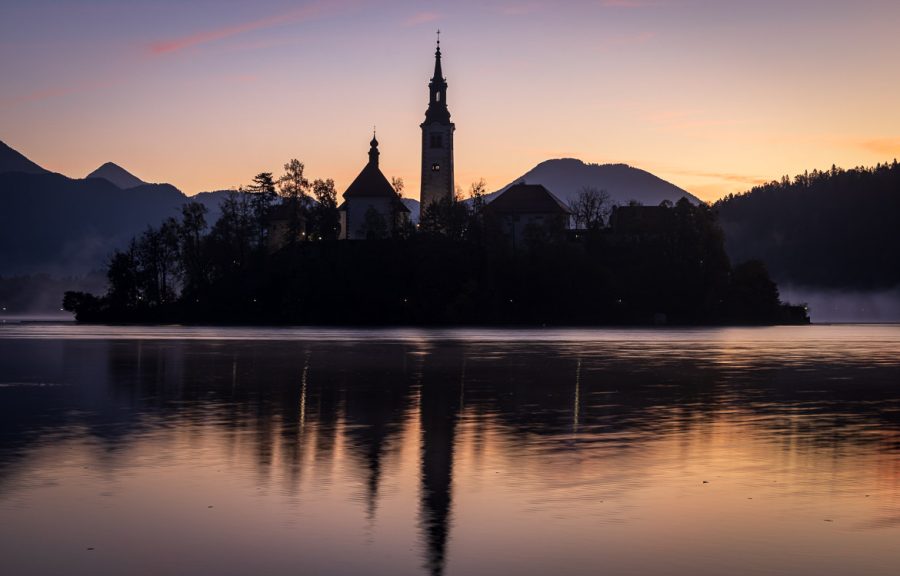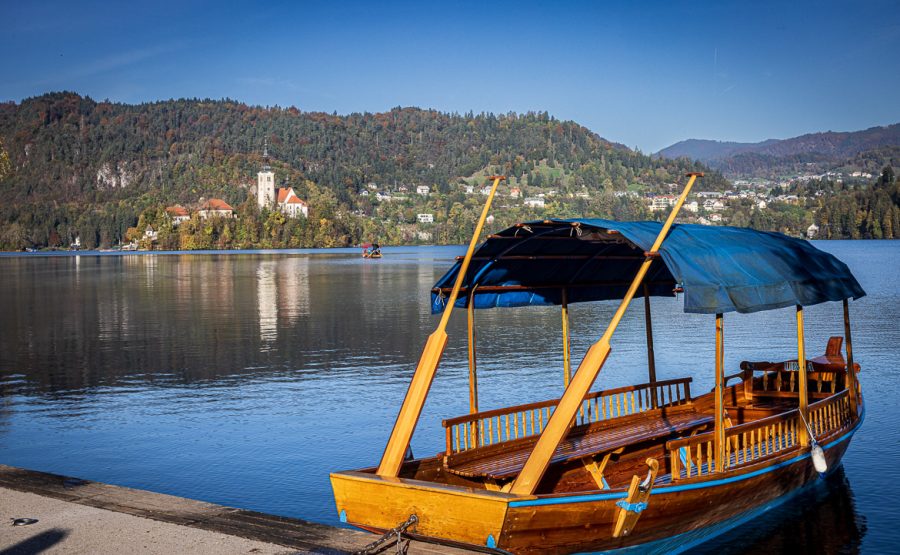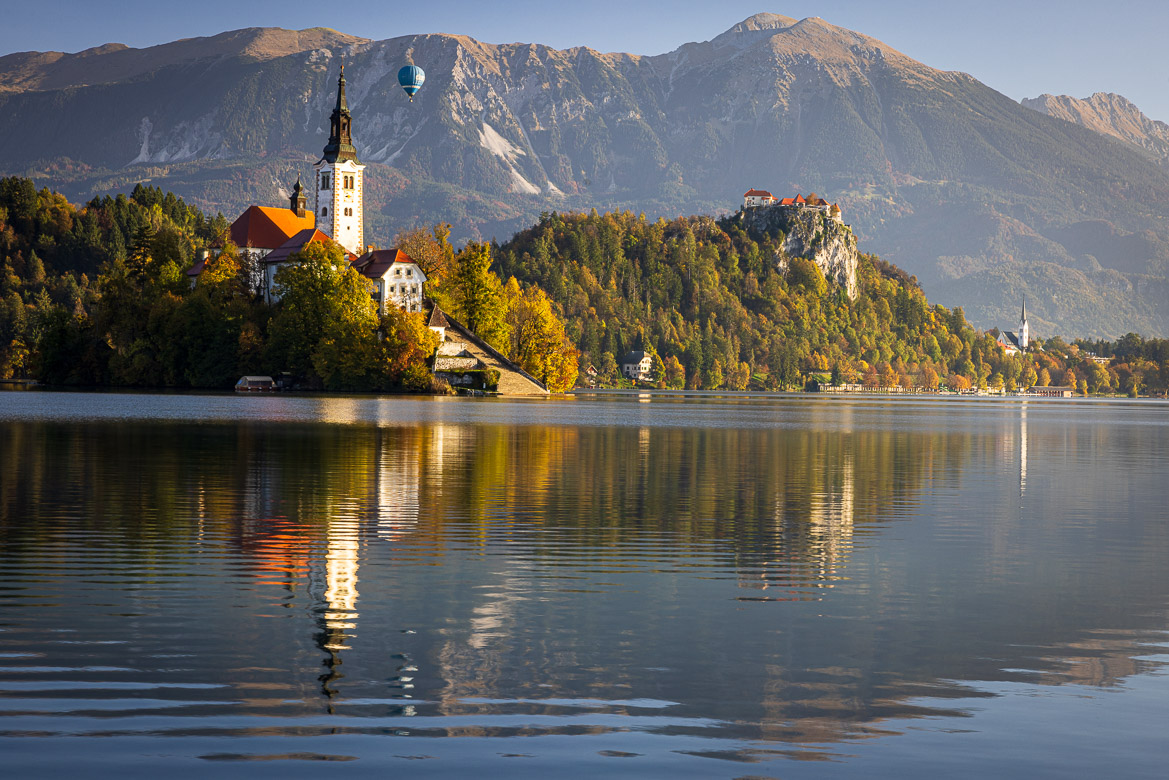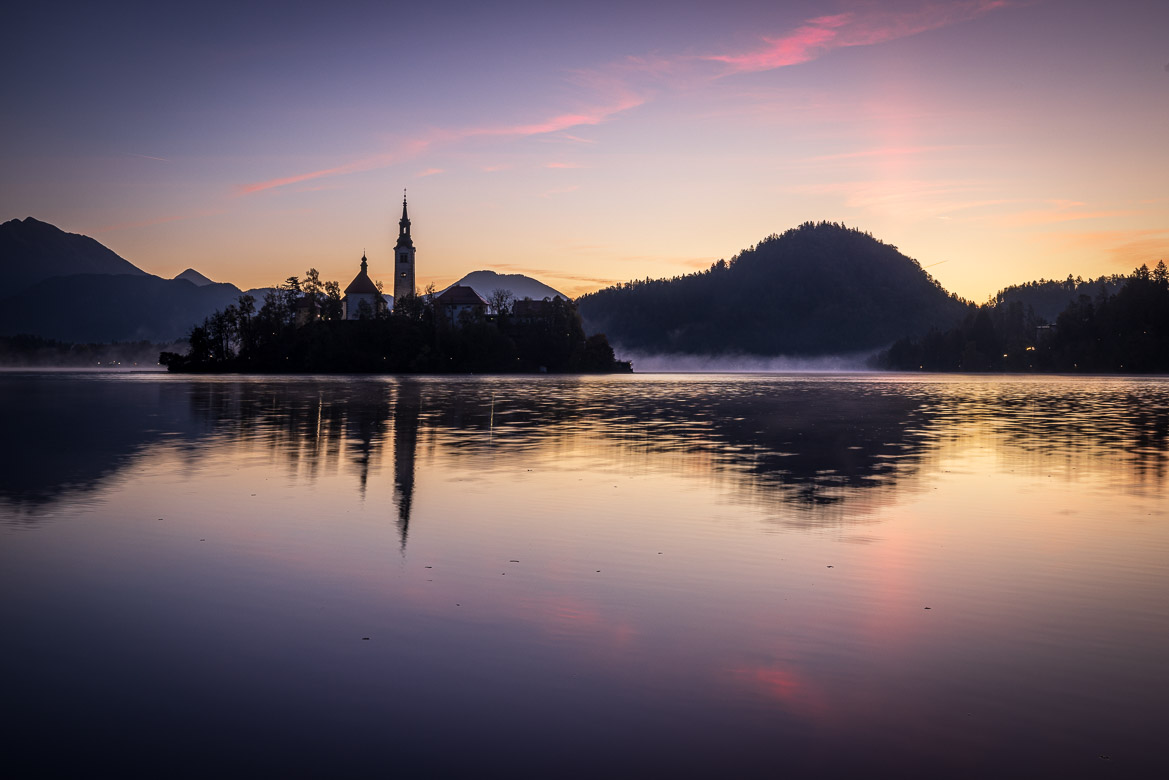
Lake Bled is situated on the foothills of the Alps in northern Slovenia around 500 meters above sea level. Jennifer and I drove there from Italy but an easier way is to fly to the capital, Ljubljana, from which it is a 45 minutes drive northwest.
It is an attractive alpine resort at the foot of the Julian Alps. We stayed there for five days together with a small group of like-minded photographers and enjoyed the nature, the food and the company. The autumn colours are beautiful, which was the reason that our guide and photographer, Lee Frost, had chosen late October for our visit.
The lake isn’t fed by any river or glacier meltwater but rather from underground springs. As the whole area is part of a limestone karst formation with lots of caves, gorges and underground aquifiers and the water entering Lake Bled is formed of glacier run-offs, it has been given a very blue colour. My previous post about Predjana Castle showed a castle built partially inside a cave with secret passageways
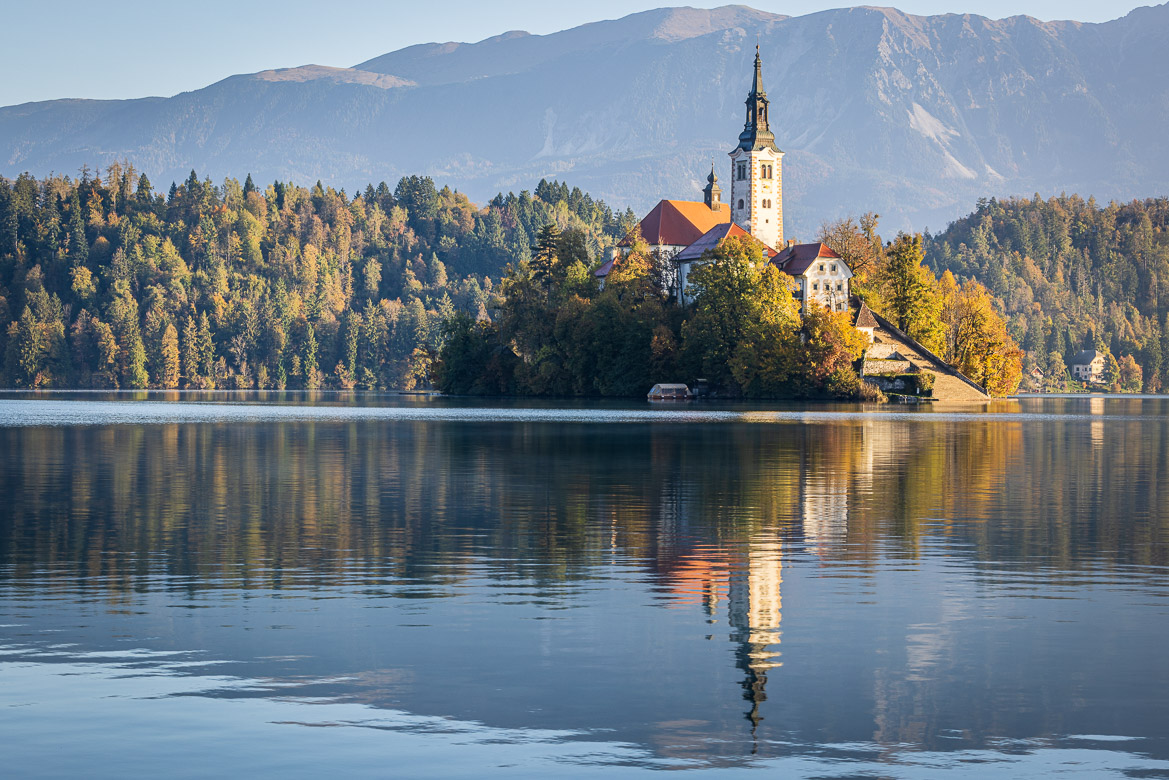
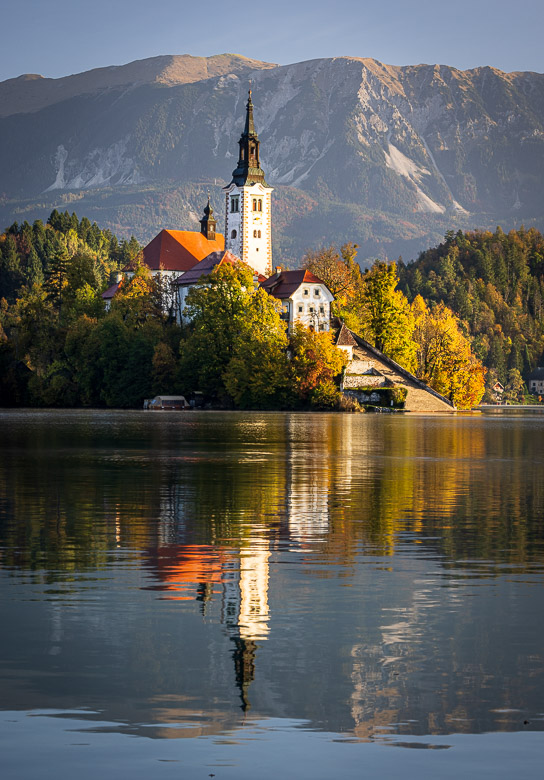
Lake Bled has one island, Blejski Otok. That is also the only island in Slovenia! The Church of the Assumption of Mary is the very famous and much photographed church on the island. It has a separate belltower that stands out (see my photos). 99 steps lead up to the church from the waterfront and plenty of small boats ferry tourists from Bled town to the island and its church.
Lake Bled has one island, Blejski Otok. That is also the only island in Slovenia! The Church of the Assumption of Mary is the very famous and much photographed church on the island. It has a separate belltower that stands out (see my photos). 99 steps lead up to the church from the waterfront and plenty of small boats ferry tourists from Bled town to the island and its church.
Bled Island was an ancient Slavic cult area and lots of graves have been found from early Middle Ages. A pre-Romanesque chapel was built here during the spreading of Christianity. The first brick built church on the island was consecrated in 1142. The current church is from the 17th C, when it was restored after an earthquake – the second one to damage the church). The bell tower from the same period is 54m high.
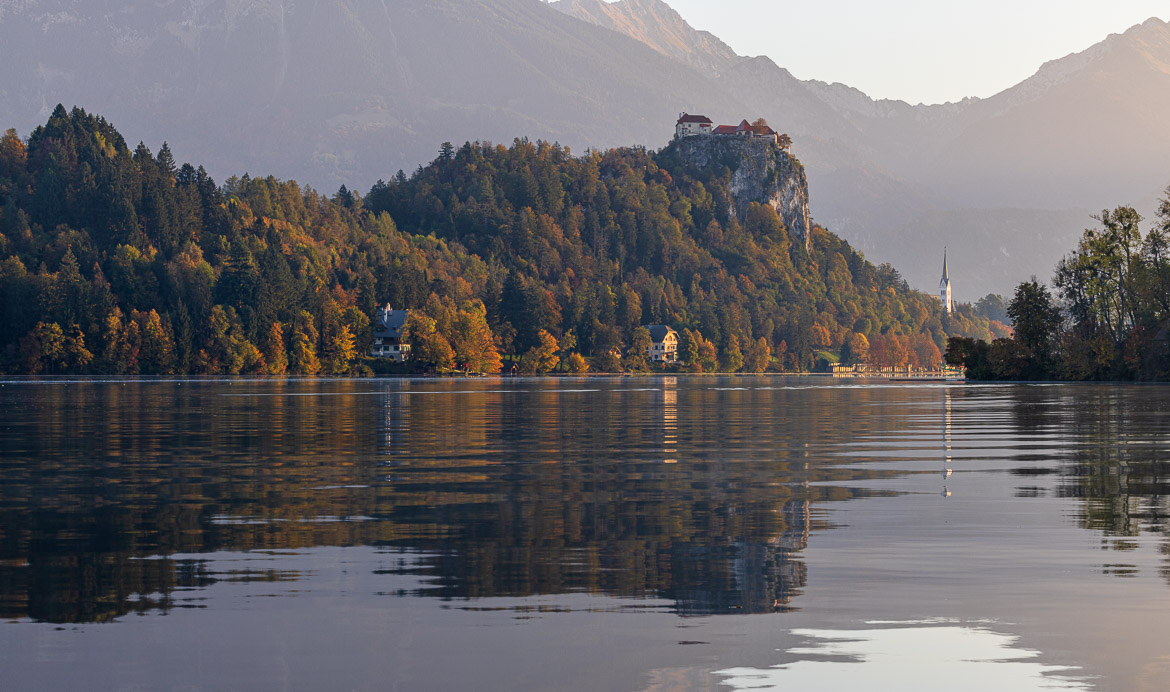
Lake Bled has its castle too. It dates back to the 11th C, although the preent castle buildings are from the 16thC. It has until the last century been the seat of the local Bishop for more than 800 years. The castle has a commanding position overlooking the lake and the town with the Church of the Assumption of Maria below it.
